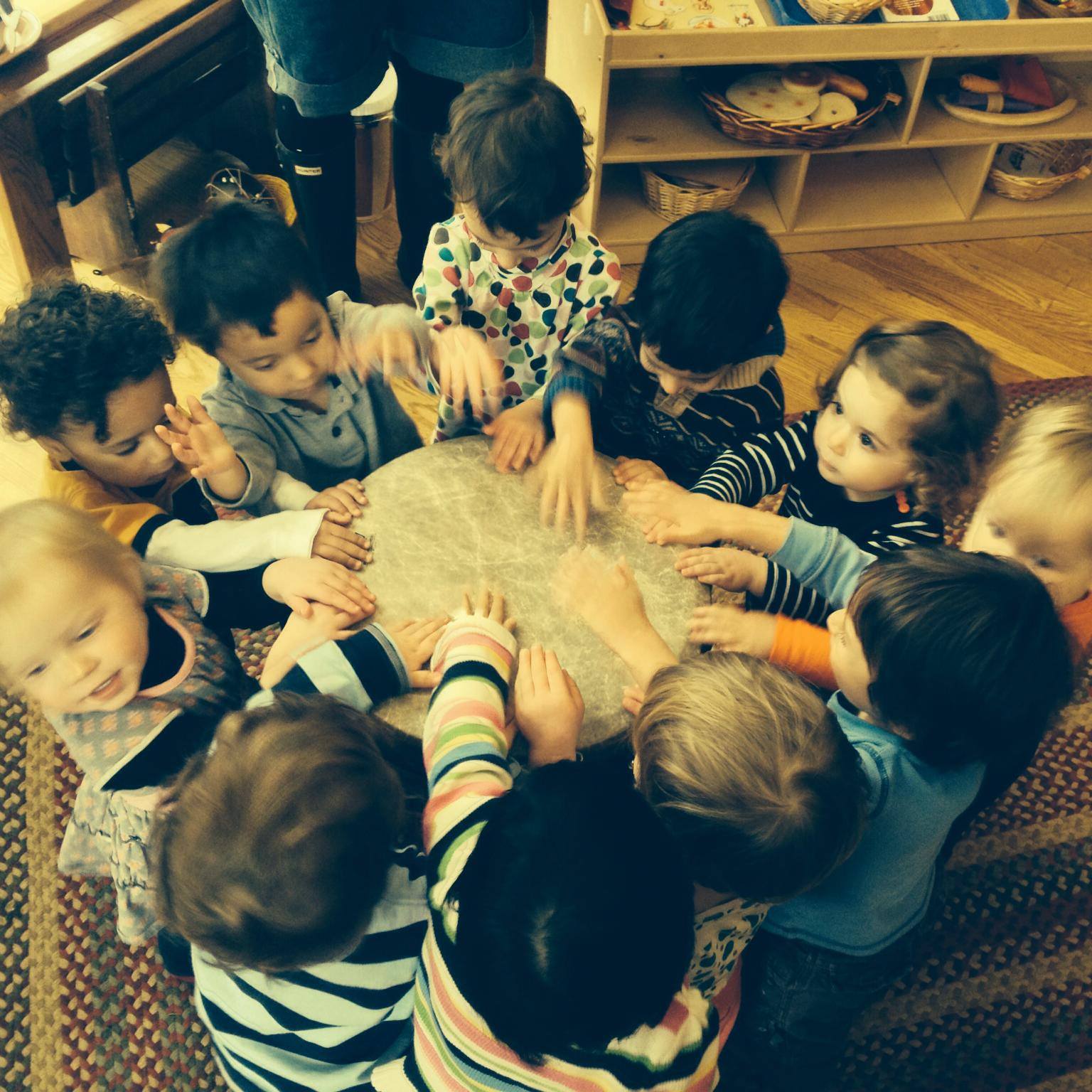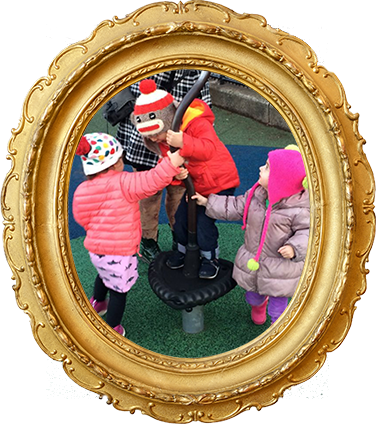To help our families at home with a primary class-aged child during this period of social distancing, we wanted to provide a list of activities that you can easily do at home which your child will find engaging, enriching and will aid in their development. The materials needed for these activities you probably already have or you can obtain fairly inexpensively through the provided links.
- Language
- Montessori Letter Book
- Small to Big Matching – Take an old calendar and cut out the little images on the back. Cut out the big images for each month. Show your child how to match the small images to the big ones.
- Story Box – Provide a small basket with a few seasonal items (e.g., a mitten, a small snow globe, an ornament) and show your child how to create a story. If they know how to write, they can record it, if not they can tell you and you can write it down while they illustrate!
- “I Spy” – Help your pre-reading child learn to isolate sounds with “I spy”. Choose a phonetic sound and say “I spy something that starts with ‘a'”. Play as long as they like!
- Rhyming Games – Collect a set of household objects or toys (e.g., dino and rhino, doll and ball) and show your child how to match the rhyming objects. Alternatively, take turns coming up with a word and asking each other to think of a rhyme.
- Household Labels – If your child has started to read, write the name of a household object on a slip of paper and let your child read it and place it on the object. Start with easy words like “box” or “cup” and increase the challenge as they’re ready.
- Story writing – If your child knows how to write, encourage them to write their own stories. If they need inspiration, let them cut out pictures from old magazines to use as the illustrations or draw a picture for them and let them make up a story about it.
- Commands – This is a fun one because it incorporates gross motor and reading! Write action words on slips of paper (e.g., jump, walk, spin, etc.) and take turns choosing a paper. Whoever’s turn it is reads the paper silently and acts it out while the other guesses the action.
- Reading Non-Fiction Books – Reading non-fiction books helps expand your child’s vocabulary as well as their understanding of the world
- Sensorial
- Mystery bag – Give your child a drawstring bag with a few themed items from around the house (e.g., their small dino toys or kitchen objects). Instruct them to close their eyes (or you can give them/fashion a blindfold) and use only their hands to guess what the objects are.
- Smelling Bottles – Fill a few spice jars with herbs or cotton balls with kid-safe essential oils. Let your child enjoy smelling and guessing what they are. For an older child, you can provide two sets of bottles and let them match the smells.
- Sound Matching – Fill little bottles or jars (paint or cover if transparent) with little objects like rice, beans, beads, acorns, tiny bells, etc. You’ll need two bottles, each a different color or marked with a colored sticker (one set with blue stickers, one set with red stickers) for each filling. Let your child try to match the sounds.
- Building Blocks – Collect blocks and have children sort or arrange according to size, color, geometric shape, etc.
- LEGO – LEGO projects! Simple sets with 150 pieces or less, start by sitting with them and sorting all the pieces by color then slowly guide them through the building experience, teaching them to follow instructions. Slowly turn over the responsibility to them and only help when they get stuck. Have a container of loose LEGOs, give them challenges to build random objectives like animals, everyday objects like cups, fruits, cars, airplanes, trees, etc.
- Geography/Culture/Science
- Sink or Float – Use a tub of water (or the actual bathtub to avoid the mess!) and give your child a variety of objects. Ask them to hypothesize which will sink and which will float and then test their theory.
- Magnetic/Non-Magnetic – Provide your child with a variety of objects, some magnetic and some not, and let them guess which are magnetic and test their theory.
- Living/Non-Living – Explain to your child the difference between living and non-living things—for example, a house plant is “living” but the pot it’s in is “non-living.”. Make little labels (“living” on green paper and “non-living” on white paper so pre-readers can tell the difference) and let your child label things in your home as living or non-living.
- Air, Land, Water – Collect small objects or images representing things found in air, land, and water and let your child practice sorting them.
- Bird Watching – Set up a little bird watching station by a window. All you need is a small chair or floor cushion, some images of common birds in your area (or a bird book!) and binoculars if you like. You can set up a bird feeder outside of the window to increase the action!
- Google Maps – Explore Google Maps on your device with your child, show them where you live, show them where school is in relation to your home, show them Philadelphia, Center City, the Rivers, the Zoo. Show them places you’ve recently traveled to, etc.
- Handwritten Maps – Draw a map of your house, a map of the room your currently sitting in with furniture and labels of all the things in the room. Draw a map of your hand, your body and label the different parts.
- Clocks – Have an analog clock in your home, constantly point out the time, ask them what time it is, tell them at this time we will have lunch, etc.
- Practical Life:
- Getting Dressed and Undressed – Give your child plenty of time to get dressed. Your child can practice putting on/taking off socks, shoes/boots, shirts/pants. If you can, have their clothing easily accessible low shelves, low hangers, and baskets are a great alternative.
- Dressing/Undressing Routines (although this link is geared towards toddlers it definitely still applies to primary age children)
- Help with breakfast – Have your child use a measuring cup to scoop and pour their own cereal into their bowl. If available, have your child use a small pitcher or cup to pour their milk into their bowl as well. You could also make one shelf in your refrigerator accessible to your child for them to independently make themselves some breakfast.
- Laundry – Have your child help with putting away clean clothing. You can even show them how to fold some of their clothes and have them practice folding and putting clothes away. You could also have your child help with sorting the laundry.
- Clean Windows – If you have a spray bottle at home you can make a homemade cleaning solution of half water, half white vinegar, and drops of some good smelling essential oils! This is a great practical life activity that helps to develop gross motor skills and helps children participate in taking care of their environment.
- Care of Plants – Have your child help you with taking care of living/non-living things at home. Allow your child to fill up a watering can (or pitcher/cup) and water plants that are in need of some water! You could also have children use cotton balls and water for leaf polishing for plants with larger leaves.
- Getting Dressed and Undressed – Give your child plenty of time to get dressed. Your child can practice putting on/taking off socks, shoes/boots, shirts/pants. If you can, have their clothing easily accessible low shelves, low hangers, and baskets are a great alternative.
- Mathematics:
- Recipes – Not only is baking a great activity that falls under the practical life and sensorial areas, it’s great for having your child practice their math skills.
- Tabletop Number Rods w/ Cards- Number rods is a great math activity that helps children understand the quantity for numbers 0-9, as wells as the symbols for numbers 0-9. The tabletop Number Rods is just a smaller version of the Number Rods that you can easily use at home!
- Sandpaper Numbers – Just like sandpaper letters, sandpaper numbers would be a great activity for your children to utilize at home. It prepares them for writing numbers and helps them identify the symbols for numbers 0-9.
- Number Game (Memory Game) – All the children really love playing the number game at school. Your child can pick a number from a basket with numbers labeled 1-10 (you can also start with 1-5), after your child picks a number, they can find enough objects from around the house to match the number they picked.
- Sequencing – Not only is sequencing a great sensorial activity, it helps to develop the mathematical mind. Sequencing can be anything from lining up numbers 1-10 in the correct order to putting together the sequence of the bee life cycle.
- Additional Montessori Math Links
- Art:
- Scissor cutting – What’s great about scissor cutting is that you can relate it to so many themes and other areas in the classroom. Children can practice cutting on different types of lines or they could practice cutting out shapes. They could cut out pictures from a magazine and put together their own collage!
- Options for drawing and writing– Colored pencils for coloring, with a pencil sharpener. Sharpening a pencil is an activity in itself! Crayons that are different sizes and shapes, and pastels/chalk are great coloring utensils. Once again coloring can be related to any area of the classroom or any theme.
- Sculpture – Playdough or clay are great art supplies that allow children to have fun with sculpture work.
- Painting – Painting is a great art activity that helps to develop a child’s fine motor skills, it helps them with expressing their emotions and helps with problem-solving.
- Pin-Punching – This activity serves a purpose in both the art and writing areas of the classroom. It really helps children develop their pincer grasp and fine motor skills. It also helps with their eye to hand coordination. This is another activity that can be related to any other area in the classroom or any theme.
- Montessori Pin Punching
- Wood Handled Puncher (or you can use push pins)
- World Map Continent Printable for Punching
- Additional Montessori Art Links


